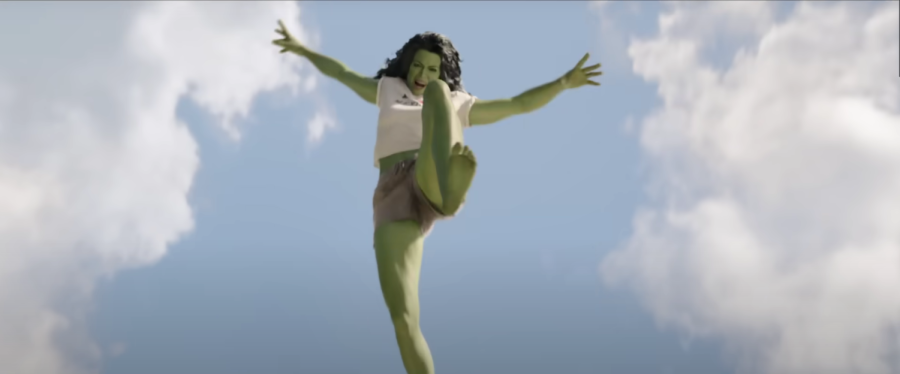She-rocks or She-sucks: A Review of “She-Hulk: An Attorney at Law”
In “She-Hulk: Attorney at Law,” Jennifer Walters gains hulking abilities, forcing her into new struggles to balance her femininity and career.
Disclaimer: Minor spoilers for the series
“She-Hulk: An Attorney at Law” pulls no punches.
As one of the many TV shows that aired on Disney+ as a spin-off of the Marvel Cinematic Universe (MCU), the show sought to diversify the male-dominated field of superheroes, playing into the new “feminist agenda” of the MCU. While the execution of the superhero show leaves much to be desired, it provides surprisingly insightful commentary on common issues women face in the workforce and the media.
This show has its fair share of skeptics — I was one too. I took one look at the bad CGI of She-Hulk in heels and assumed this was another one of Marvel’s cringey and badly executed feminist media stunts.
It isn’t. Or, at least, it tries not to be.
Jennifer Walters (Tatiana Gabriele Maslany) and her cousin, Bruce Banner (Mark Ruffalo) get into a car accident, and some of his Hulk-ified blood seeps into one of her open wounds. As a result, she also ends up becoming a Hulk.
Instead of fighting the stereotypical bad guys and villains, Walters struggles through something much harder: the intersection between professionalism and femininity. Walters’ perspective highlights the difficulty of being a woman in a male-dominated world, both in terms of her day job and super alter-ego. By centering her story around combating these issues, the show actively highlights the experience of women that runs parallel in the fictional world of the MCU — a breath of fresh air in a male-centered and male-catered genre.
The show intersperses these moments throughout its storyline, such as the snide remarks about Walters’ legal skill, weird men on dating apps and even her own mother commenting on her waist instead of her newly-gained superpowers. These moments don’t just reflect the MCU and Walters’ world as a superhero; it resonates with real-life situations faced by female and female-presenting viewers.
But it’s not to say that the show is the leading media on women’s issues. There are still moments that seem artificial. Take the first episode: Walters controls her “hulking” effortlessly, which took Banner decades to master. She can match any technique Banner throws at her, including literally throwing boulders. While this may have saved the audience from watching yet another “learning how to control their powers” superhero montage, her lack of power-related obstacles seems cringey and faked, like a media ploy to show how Marvel believes girls can be superheroes too.
The show also carries the typical Marvel-esque humor: slapstick comedy, long pauses and knowing looks to the audience. It’s lighthearted — in fact, the show’s overarching plot, the main villain and conflict take a backseat until the last two episodes. The comedic storytelling makes the show perfect for a casual weekend binge when you want nothing more than to shut the world, and your brain, off.
It’s not perfect. In fact, it doesn’t even come close with its particularly shoddy computer-generated imagery (CGI) and one of the weirdest show finales I’ve seen. But it is a step in the right direction — a huge, hulking high-heeled one, sure — but I hope Marvel keeps walking.




